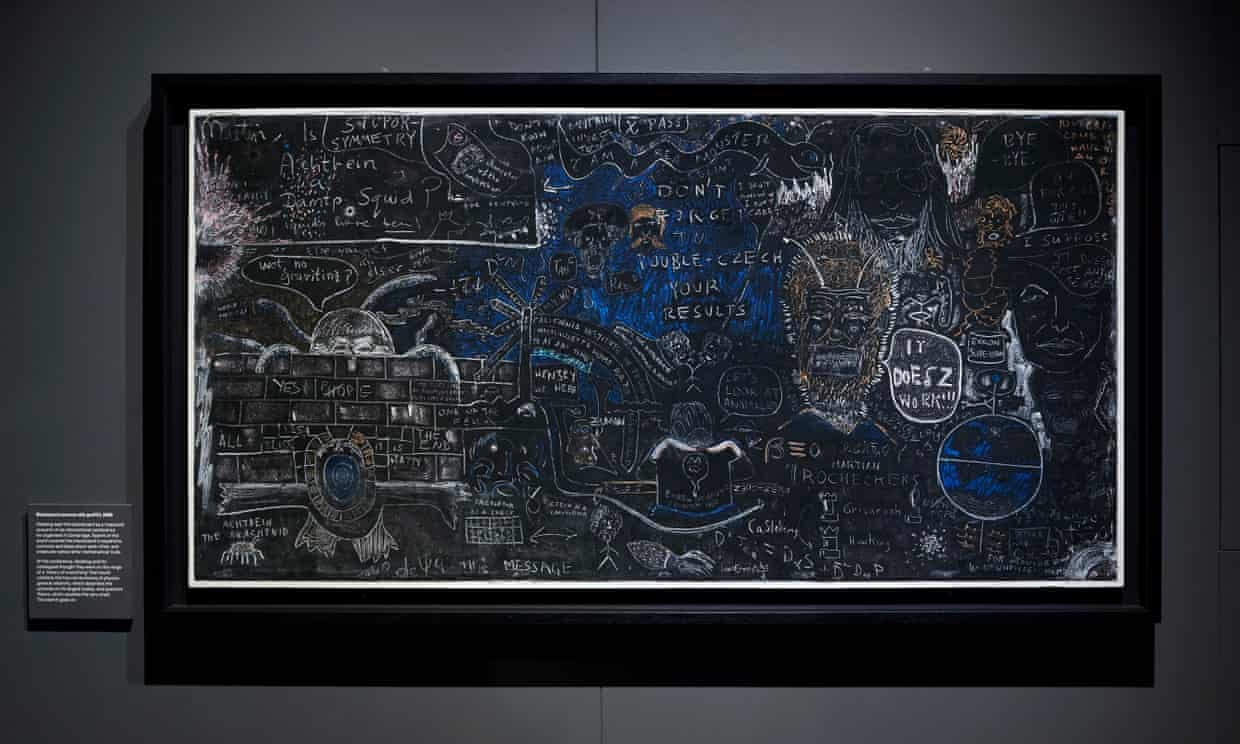Mysteries of Stephen Hawking's doodle-filled blackboard may finally be solved
What is "Exxon gravity," and why was it on the legendary physicist's chalkboard?

A new museum exhibit hopes to uncover the secrets behind the doodles, in-jokes and coded messages on a blackboard that legendary physicist Stephen Hawking kept untouched for more than 35 years.
The blackboard dates from 1980, when Hawking joined fellow physicists at a conference on superspace and supergravity at the University of Cambridge in the U.K., according to The Guardian. While attempting to come up with a cosmological "theory of everything" — a set of equations that would combine the rules of general relativity and quantum mechanics — Hawking's colleagues used the blackboard as a welcome distraction, filling it with a mishmash of half-finished equations, perplexing puns and inscrutable doodles.
Still preserved more than 40 years later, the befuddling blackboard has just gone on public display for the first time ever as the centerpiece of a new exhibition on Hawking's office, which opened Feb. 10 at the Science Museum of London. The museum will welcome physicists and friends of Hawking — who died in 2018 at the age of 76 — from around the world in hopes that they may be able to decipher some of the hand-scrawled doodles.
What, for example, does "stupor symmetry" mean? Who is the shaggy-bearded Martian drawn large at the blackboard's center? Why is there a floppy-nosed squid climbing over a brick wall? What is hiding inside the tin can labeled "Exxon supergravity?" Hopefully, the world's great minds of math and physics can rise to the occasion with answers.
The blackboard joins dozens of other Hawking artifacts on display, including a copy of the physicist's 1966 Ph.D. thesis on the expansion of the universe, his wheelchair and a personalized jacket given to him by the creators of "The Simpsons" to honor his multiple appearances on the show. The exhibit will run until June 12 at the Science Museum in London, before hitting the road with stops at several other museums in the U.K., according to The Guardian.
Hawking was born in England on Jan. 8, 1942. While studying cosmology at the University of Cambridge in 1963, he was diagnosed with motor neuron disease, more commonly known as Lou Gehrig's disease or amyotrophic lateral sclerosis (ALS). Then just 21, Hawking was expected to live just two more years. He continued to live and work for more than five decades, publishing pioneering work on black holes, the Big Bang theory and general relativity.
Originally published on Live Science.
Get the Space.com Newsletter
Breaking space news, the latest updates on rocket launches, skywatching events and more!
Join our Space Forums to keep talking space on the latest missions, night sky and more! And if you have a news tip, correction or comment, let us know at: community@space.com.

Brandon has been a senior writer at Live Science since 2017, and was formerly a staff writer and editor at Reader's Digest magazine. His writing has appeared in The Washington Post, CBS.com, the Richard Dawkins Foundation website and other outlets. He holds a bachelor's degree in creative writing from the University of Arizona, with minors in journalism and media arts. He enjoys writing most about space, geoscience and the mysteries of the universe.










